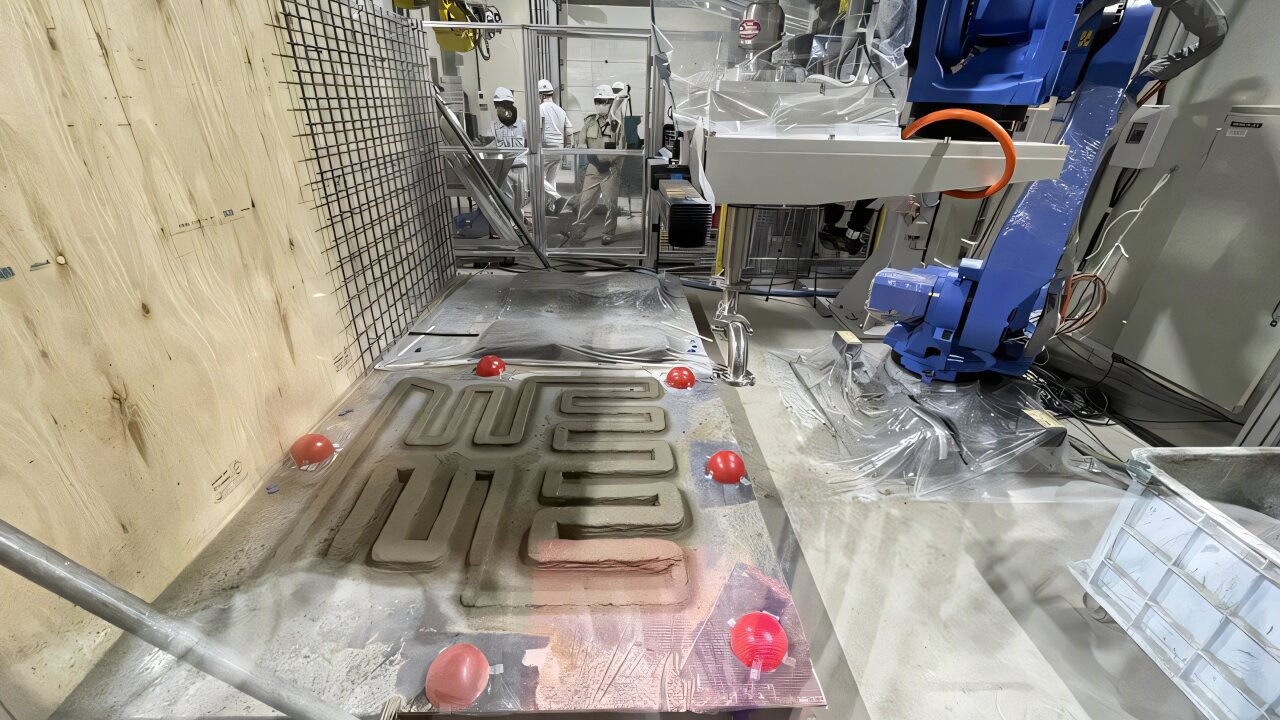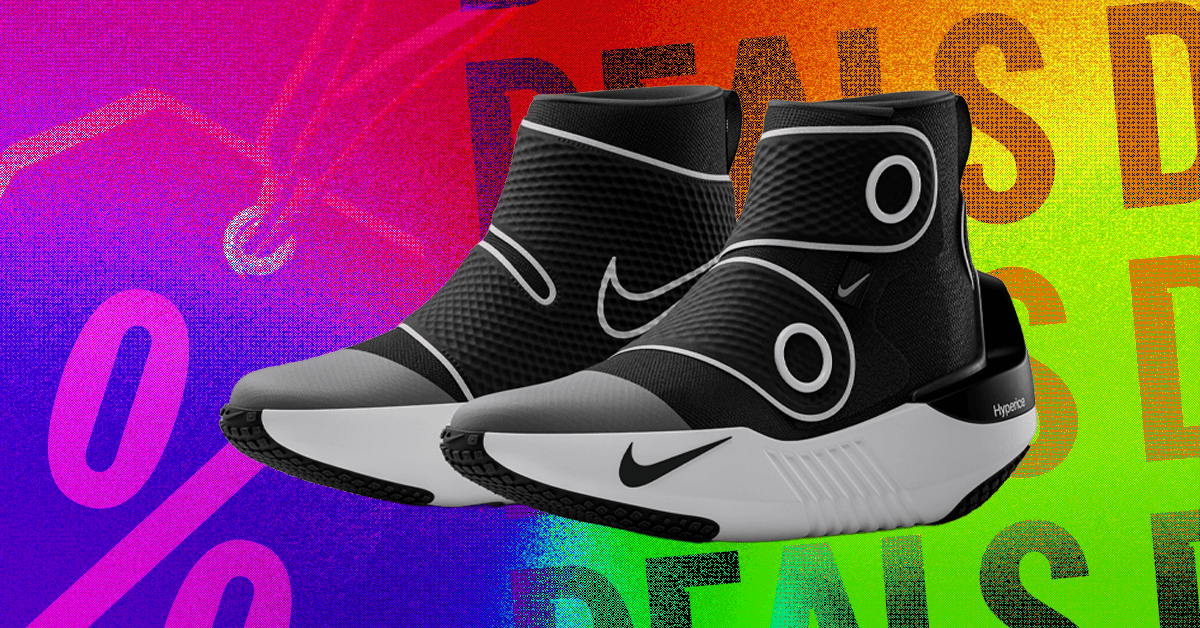Tech
DHS Has Been Collecting US Citizens’ DNA for Years

The expansion has been driven by specific legal and bureaucratic levers. Foremost was an April 2020 Justice Department rule that revoked a long-standing waiver allowing DHS to skip DNA collection from immigration detainees, effectively green-lighting mass sampling. Later that summer, the FBI signed off on rules that let police booking stations run arrestee cheek swabs through Rapid DNA machines—automated devices that can spit out CODIS-ready profiles in under two hours.
The strain of the changes became apparent in subsequent years. Former FBI director Christopher Wray warned during Senate testimony in 2023 that the flood of DNA samples from DHS threatened to overwhelm the bureau’s systems. The 2020 rule change, he said, had pushed the FBI from a historic average of a few thousand monthly submissions to 92,000 per month—over 10 times its traditional intake. The surge, he cautioned, had created a backlog of roughly 650,000 unprocessed kits, raising the risk that people detained by DHS could be released before DNA checks produced investigative leads.
Under Trump’s renewed executive order on border enforcement, signed in January 2025, DHS agencies were instructed to deploy “any available technologies” to verify family ties and identity, a directive that explicitly covers genetic testing. This month, federal officials announced that it was soliciting new bids to install Rapid DNA at local booking facilities around the country, with combined awards of up to $3 million available.
“The Department of Homeland Security has been piloting a secret DNA collection program of American citizens since 2020. Now, the training wheels have come off,” said Anthony Enriquez, vice president of advocacy at Robert F. Kennedy Human Rights. “In 2025, Congress handed DHS a $178 billion check, making it the nation’s costliest law enforcement agency, even as the president gutted its civil rights watchdogs and the Supreme Court repeatedly signed off on unconstitutional tactics.”
Oversight bodies and lawmakers have raised alarms about the program. As early as 2021, the DHS Inspector General found the department lacked central oversight of DNA collection and that years of noncompliance that can undermine public safety—echoing an earlier rebuke from the Office of Special Counsel, which called CBP’s failures an “unacceptable dereliction.”
US senator Ron Wyden more recently pressed DHS and DOJ for explanations about why children’s DNA is being captured and whether CODIS has any mechanism to reject improperly obtained samples, saying the program was never intended to collect and permanently retain the DNA of all noncitizens, warning the children are likely to be “treated by law enforcement as suspects for every investigation of every future crime, indefinitely.”
Rights advocates allege that CBP’s DNA collection program has morphed into a sweeping genetic surveillance regime, with samples from migrants and even US citizens fed into criminal databases absent transparency, legal safeguards, or limits on retention. Georgetown’s privacy center points out that once DHS creates and uploads a CODIS profile, the government retains the physical DNA sample indefinitely, with no procedure to revisit or remove profiles when the legality of the detention is in doubt.
In parallel, Georgetown and allied groups have sued DHS over its refusal to fully release records about the program, highlighting how little the public knows about how DNA is being used, stored, or shared once it enters CODIS.
Taken together, these revelations may suggest a quiet repurposing of CODIS. A system long described as a forensic breakthrough is being remade into a surveillance archive—sweeping up immigrants, travelers, and US citizens alike, with few checks on the agents deciding whose DNA ends up in the federal government’s most intimate database.
“There’s much we still don’t know about DHS’s DNA collection activities,” Georgetown’s Glaberson says. “We’ve had to sue the agencies just to get them to do their statutory duty, and even then they’ve flouted court orders. The public has a right to know what its government is up to, and we’ll keep fighting to bring this program into the light.”
Tech
New algorithm enhances Doppler resolution of unmanned vehicle radars

A research team has developed an extrapolation-based Doppler resolution enhancement algorithm for frequency modulated continuous wave radars. The algorithm improves system performance, offering an advancement that is superior to existing ultra-high-resolution technologies.
The findings are published in the Journal of Electrical Engineering & Technology. The team was led by Sang-dong Kim and Bong-seok Kim, affiliated with the DGIST Division of Mobility Technology, in collaboration with a team led by Professor Youngdoo Choi, affiliated with the Republic of Korea Naval Academy (ROKNA).
Improving radar accuracy without extra hardware
This research introduces a technology that improves radar detection accuracy without the need for additional complex computations or hardware. The technology is expected to contribute to enhancing radar system performance on various intelligent unmanned platforms such as unmanned aerial vehicles (UAVs), unmanned ships, and autonomous vehicles.
Conventional radar systems analyze the Doppler effect to determine the velocity of a target, but the fast Fourier transform (FFT)-based approach has limitations regarding resolution (i.e., the accuracy of velocity discrimination). To address this, the joint DGIST–ROKNA research team applied a signal extrapolation technique and has proposed a new algorithm that enhances Doppler resolution without extending observation time.
Performance gains and real-world applications
The proposed method successfully reduces the root mean square error of velocity estimation by up to 33% and decreases the target miss rate by up to 68%, representing a substantial improvement over the conventional approach. Notably, the proposed method maintains the same computational complexity level as the conventional FFT method, thereby simultaneously achieving fast processing speed and high efficiency.
This technology can effectively solve the problem of signal overlap between targets moving at similar velocities, particularly when UAVs or radar systems detect multiple objects simultaneously. It can therefore greatly enhance the ability to distinguish closely spaced targets and improve detection accuracy, marking a new milestone in the advancement of high-resolution target detection technology.
Additionally, the technology is highly regarded for its industrial applicability because it requires no additional hardware resources and features a simple computational structure that enables real-time implementation.
Sang-dong Kim, principal researcher at the Division of Mobility Technology (concurrently serving the interdisciplinary engineering major), said, “This study demonstrates an improvement in both the efficiency and precision of radar signal processing, enabling more accurate target detection without the need for additional equipment. It is expected to evolve into a key technology for defense, autonomous driving, and unmanned systems.”
More information:
Youngdoo Choi et al, Doppler Resolution Enhancement Algorithm Based on Extrapolation for FMCW Radar, Journal of Electrical Engineering & Technology (2025). DOI: 10.1007/s42835-025-02453-6
Citation:
New algorithm enhances Doppler resolution of unmanned vehicle radars (2025, November 11)
retrieved 11 November 2025
from https://techxplore.com/news/2025-11-algorithm-doppler-resolution-unmanned-vehicle.html
This document is subject to copyright. Apart from any fair dealing for the purpose of private study or research, no
part may be reproduced without the written permission. The content is provided for information purposes only.
Tech
Spray 3D concrete printing simulator boosts strength and design

Concrete 3D printing reduces both time and cost by eliminating traditional formwork, the temporary mold for casting. Yet most of today’s systems rely on extrusion-based methods, which deposit material very close to a nozzle layer by layer. This makes it impossible to print around reinforcement bars (rebars) without risk of collision, limiting both design flexibility and structural integrity of builds.
Kenji Shimada and researchers in his Carnegie Mellon University’s Computational Engineering and Robotics Laboratory (CERLAB), are breaking through that limitation with a new simulation tool for spray-based concrete 3D printing.
“Spray-based concrete 3D printing is a new process with complicated physical phenomena,” said Shimada, a professor of mechanical engineering. “In this method, a modified shotcrete mixture is sprayed from a nozzle to build up on a surface, even around rebar.”
The ability to print freely around reinforcement is especially important in places like Japan and California, where earthquakes are an imminent threat and structural strength is critical.
“To make this technology viable, we must be able to predict exactly how the concrete will spray and dry into the final shape,” Shimada explained. “That’s why we developed a simulator for concrete spray 3D printing.”
The new simulator can model the viscoelastic behaviors of shotcrete mixtures, including drip, particle rebound, spread, and solidification time. This way, contractors can assess multiple printing paths based on a CAD design with the simulator to evaluate whether spray 3D printing is a feasible fabrication technique for their structure.
The team traveled to Tokyo, Japan, where Shimizu Corporation already operates spray 3D printing robots to validate their model. In the first test, the team focused on the simulator’s ability to predict shape based on the speed of the nozzle’s movement. With 90.75% accuracy, the simulator could predict the height of the sprayed concrete. The second test showed that the simulator could predict printing over rebar with 92.3% and 97.9% accuracy for width and thickness, respectively.
According to Soji Yamakawa, a research scientist in Shimada’s lab and the lead author of the team’s research paper published in IEEE Robotics and Automation Letters, a simulation of this kind would typically take hours, if not days, to run.
“By making wild assumptions, we were able to successfully simplify a super complex physics simulation into a combination of efficient algorithms and data structures and still achieved highly realistic output,” Yamakawa said.
Future work will aim to increase accuracy by identifying environmental parameters like humidity, optimizing performance, and adding plastering simulation to create smoother finished products.
“There are still so many applications and technologies that we can develop with robotics,” said Kyshalee Vazquez-Santiago, a co-author of the paper and a mechanical engineering Ph.D. candidate leading the Mobile Manipulators research group within CERLAB.
“Even in concrete 3D printing, we are working with an entirely new type of application and approach that has so many advantages but leaves so much room for further development.”
More information:
Soji Yamakawa et al, Concrete Spray 3D Printing Simulator for Nozzle Trajectory Planning, IEEE Robotics and Automation Letters (2025). DOI: 10.1109/lra.2025.3615038
Citation:
Spray 3D concrete printing simulator boosts strength and design (2025, November 11)
retrieved 11 November 2025
from https://techxplore.com/news/2025-11-spray-3d-concrete-simulator-boosts.html
This document is subject to copyright. Apart from any fair dealing for the purpose of private study or research, no
part may be reproduced without the written permission. The content is provided for information purposes only.
Tech
The Nike x Hyperice Hyperboot Is $200 Off

For the first time, the Nike x Hyperice Hyperboot is on sale. The recovery boots are $200 off—normally $899, now $699—through December 1. They’re also HSA/FSA eligible. Normally, I’d point you toward the Normatec 3 Legs; they cost the same and offer more leg coverage, but at this discounted price, the Hyperice Hyperboot’s portability and comfort are a hard deal to pass up.
The discount is part of Hyperice’s Black Friday sale, which runs from November 20 to December 1. Stay tuned, as we’ll be tracking all the best Hyperice holiday deals as they roll out.
Hyperice’s Normatec recovery boots are a favorite among athletes, but their one downside is that you have to stay put while using them. The Hyperboots pack the same air compression tech as the Normatecs, but in a wearable, high-top design, courtesy of Nike. You can get a foot massage while you do the dishes.
Each boot offer three levels of compression and heat (up to 125 degrees Fahrenheit), adjustable via a built-in control panel. The two sync automatically when worn together, and battery life is about 90 minutes per charge. They’re IP54 rated, meaning they’re dust- and splash-resistant, but not waterproof.
Reviewer Kristin Canning tested the boots on her drive back home after a day of snowboarding and said it was a game changer. She could flush out lactic acid and thaw her toes before she even got home. While they’re recovery boots, they do have a warmup mode that makes them just as useful before workouts to get your blood flowing.
Canning did point out that the air pumps make an airplane-like hum, but it’s nothing too overwhelming. If you’ve already bought your season pass and are doing your one-leg squats and hip rotations, there’s no better time to grab a pair of the boots that will keep your legs fresh all the way through March.
Power up with unlimited access to WIRED. Get best-in-class reporting and exclusive subscriber content that’s too important to ignore. Subscribe Today.
-

 Tech1 week ago
Tech1 week agoCISOs in court: Balancing cyber resilience and legal accountability | Computer Weekly
-

 Fashion1 week ago
Fashion1 week agoCoach reconnects with Bank & Vogue for upcycled bags using corduroy
-

 Business1 week ago
Business1 week agoFirst new Amazon electric heavy goods vehicles hit UK roads
-

 Sports1 week ago
Sports1 week agoNFL broadcaster Cris Collinsworth makes government shutdown joke as Seahawks clobber Commanders
-

 Tech1 week ago
Tech1 week agoThe Security Interviews: Colin Mahony, CEO, Recorded Future | Computer Weekly
-

 Fashion1 week ago
Fashion1 week agoGermany’s Adidas achieves highest-ever quarterly sales in Q3 2025
-

 Sports1 week ago
Sports1 week agoSources: QB Daniels dislocated elbow in loss
-

 Business1 week ago
Business1 week agoReeves lays ground for painful Budget, but will it be worth it?





















